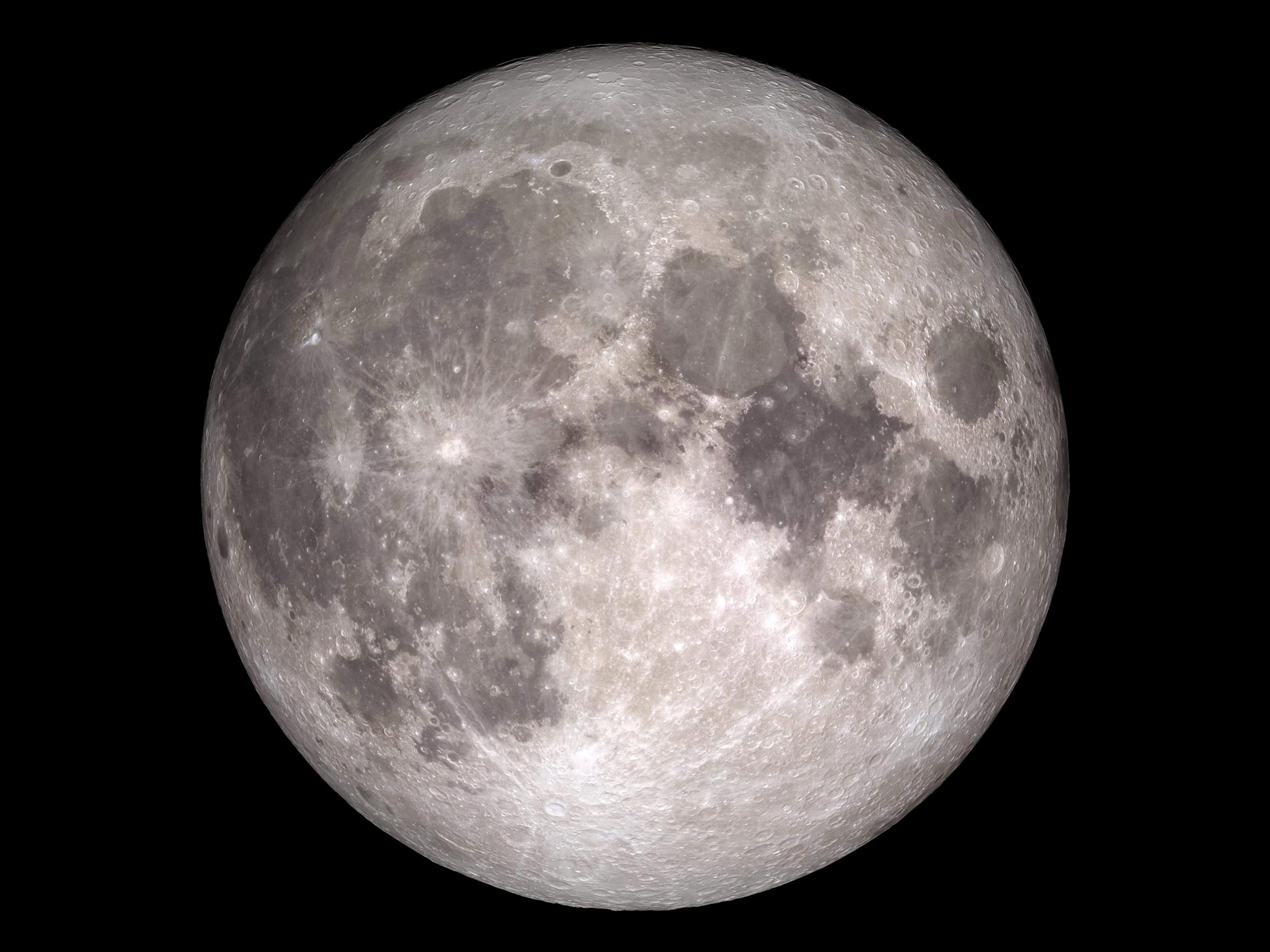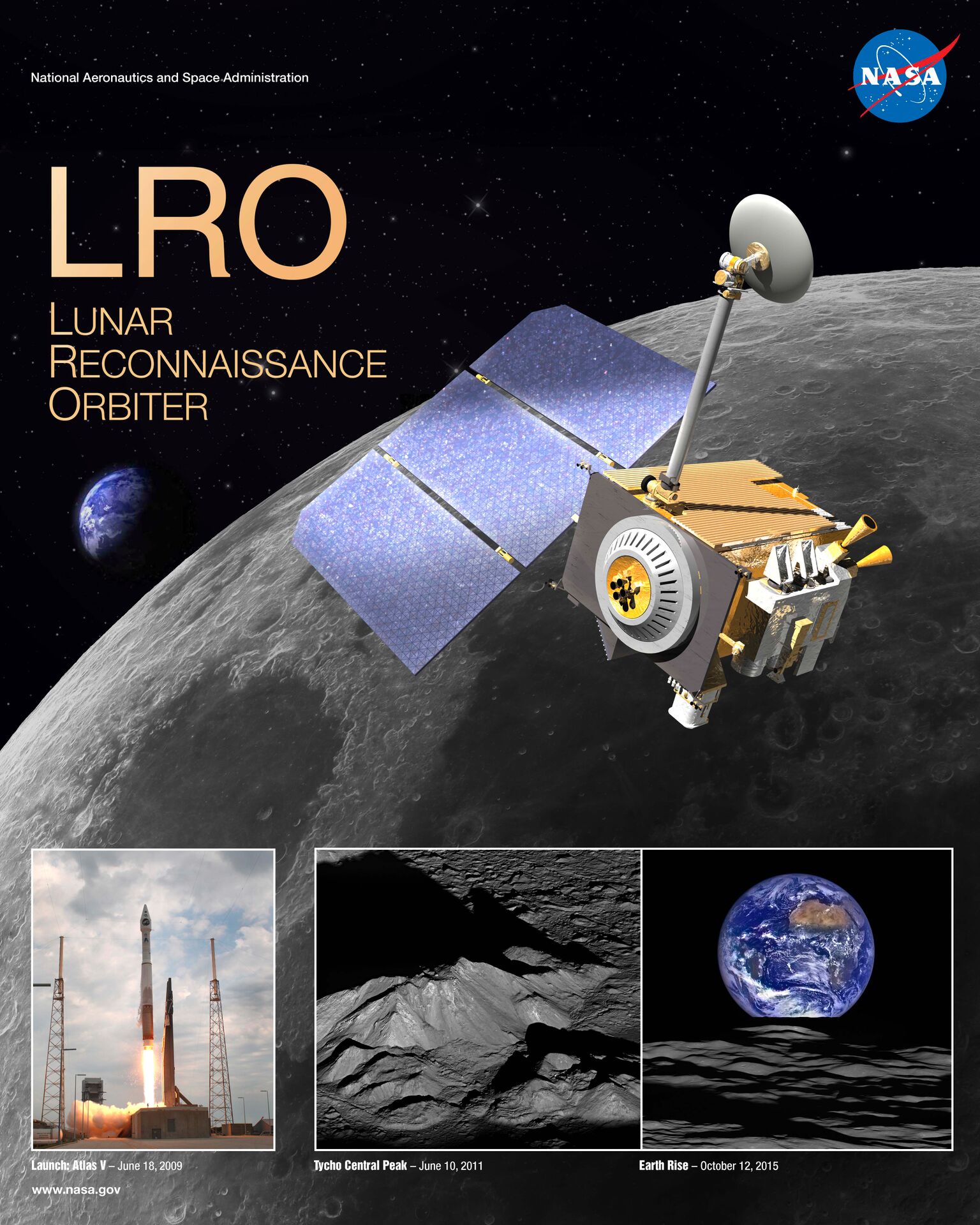

The 61 large prints presented in this exhibition reveal a. A New Moon Rises showcased those breathtaking images from Apollo landing sites to majestic mountains that rise out of the darkness of the lunar poles. Launched on June 18, 2009, LRO has collected a treasure trove of data with its seven powerful instruments, making an invaluable contribution to our knowledge about the Moon. NASA has confirmed the Moon is a bit messier and a mystery has deepened after its Lunar Reconnaissance Orbiter (LRO) spacecraft discovered the double impact. The Lunar Reconnaissance Orbiter Camera (LROC) has captured dramatic landscapes of the Moon since it was first launched in 2009. LRO is managed by NASA's Goddard Space Flight Center in Greenbelt, Maryland, for the Science Mission Directorate at NASA Headquarters in Washington. The major rings visible here have a diameter of 270,000 km (168,000 miles), about 70% of the average distance between the Earth and the Moon. Credit: NASA/GSFC/Arizona State Universityįortunately, the NACs can image the amazing rings of Saturn, which are likely only 10 to 100 million years old, 10 meters thick, and are comprised almost entirely of water ice. The Lunar Orbiter Photo Gallery is an extensive collection of over 2,600 high- and moderate-resolution photographs produced by all five of the Lunar Orbiter. Apollo 11 was the first manned mission to the Moon, with Neil Armstrong and Buzz Aldrin going down in history as the first humans to walk on the lunar. Moon fact: With a powerful amateur telescope you can see the Apollo landing sites and, if you look at the photos from the Lunar Reconnaissance Orbiter. Maneuvers such as this require intense planning from the LRO mission operations team at the NASA's Goddard Space Flight Center in Greenbelt, Maryland. A mosaic of images from NASAs Lunar Reconnaissance Orbiter centered on the Moons Orientale basin. The photo, which was released along with a flood of other data from the spacecraft. Saturn (enlarged 4 times) seen from the Moon. NASA’s Lunar Reconnaissance Orbiter (LRO) has created the most detailed view yet of the far side of the Moon. Since Saturn is much dimmer than the Moon (and Jupiter) and the exposure time is in effect set by the slew speed, we cannot detect the Saturnian moons as we did with the Galilean moons they are just too dim. This rate is programed to optimize LRO stability and speed and resulted in a NAC exposure time of 3.82 milli-seconds. LRO responded to the updated target by slewing to it at a specific rate across the planet. The slew across Saturn was achieved by pointing the NACs on one side of Saturn and then targeting the other side. To image Saturn, the spacecraft slews the NAC across Saturn, building up the image by mimicking our orbital ground motion. This is because they were designed to acquire images by taking advantage of the motion of the spacecraft above the surface-LRO travels over 1,600 meters per second (1 mile per second) above the Moon-to build up an image one line at a time, with very short exposure times. The Apollo 11 landing site, as seen from a height of 24 kilometers by NASAs Lunar Reconnaissance Orbiter. Visit for more information about these and other LROC images.The LROC Narrow Angle Cameras (NAC) are line scan cameras, which presents a challenge for imaging anything besides the Moon. Plus, here are additional high-resolution looks at Apollo landing sites 11, 12, 14, 15, 16, and 17, also taken by Lunar Reconnaissance Orbiter camera in 2011: We can see where it drove around around the lunar module, you can see the areas where the astronauts kicked up the dust when they walked around.” “When I first took a look at these images, you know, my jaw dropped to the ground… For example, at the Apollo 17 landing site, we can see where the lunar rover is parked on the surface. ENLARGE Downloads Original 1. Noah Petro, Research Scientist and member of the LRO Project Science: The lander, which launched in December 2022 on a SpaceX Falcon 9 rocket, was to land on April 26 on the floor of the 54-mile-wide (87 km) Atlas Crater in the Mare Frigoris ('Sea of Cold') region of. The near side of Earths Moon, as seen based on data from cameras aboard NASAs robotic Lunar Reconnaissance Orbiter spacecraft. Though they’re not up close, the images that LRO took from space are sharp enough to see lunar rover tracks and the equipment that we left behind.įrom Dr.

Released from NASA’s Lunar Reconnaissance Orbiter program on September 6th, 2011: “Lunar landing sites for Apollo 12, 14, 17 as you’ve never seen them before!” The spacecraft’s fate was confirmed this week when NASA announced that its Lunar Reconnaissance Orbiter captured 10 images of Hakuto-R’s landing site and found what appears to be at least.


 0 kommentar(er)
0 kommentar(er)
